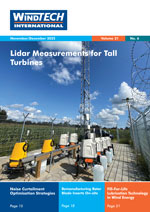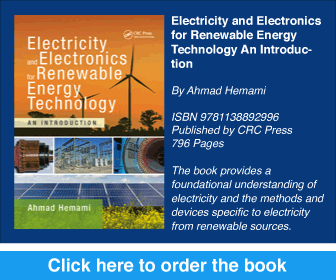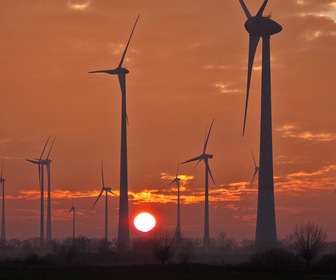New Concepts and Research…
We strive to cover new and innovative technologies in our magazine as much as possible. At the last couple of shows and conferences we have visited we discovered new concepts we would like to share with our readership. As we focus on technological issues we also pay attention to research that is done related to wind energy. The articles in this issue fit very well in this philosophy.
.
{access view=!registered}Only logged in users can view the full text of the article.{/access}{access view=registered}Green Energy Technologies (GET), a company based in Akron, Ohio, USA, is introducing a unique wind system called the SmartEnergy Spire, which creates a ‘wind tunnel’ effect forcing the wind around the Spire. Using the Bernoulli principle, the Spire design creates an efficiency of two times the throughput of a traditional wind turbine using ambient wind. Combining different technologies, for example including photovoltaic panels as well, provides a larger market for the system. On page 6 we present you with the full article about the SmartEnergy Spire.
On page 21 we publish an article entitled ‘The Sound of an Endless Train’, written by Frits van den Berg from the University of Groningen in The Netherlands. Apparently, wind farms or single turbines can be more annoying than expected from the noise impact predicted by calculation models. Residents find the sound of a wind turbine or wind farm annoying because of ‘swishing’, ‘sloshing’, ‘clapping’, ‘beating’ or ‘thumping’; all descriptions mention a periodic variation on top of a constant noisy sound. This contradicts the usual view that blade swish is only a modest variation in sound level that decreases even further with distance. Recent work gives an explanation for this paradox: because of changes in the atmosphere and the interaction between turbines, at low near-ground wind speed a wind farm can be far noisier than expected and transmit louder fluctuations. The author concludes that the complexity of the interaction between the atmosphere and a wind turbine or wind farm has been underestimated. With the expansion of wind energy and the increasing size of wind turbines, more phenomena will perhaps occur that demonstrate this complexity.
A wind turbine is expected to run day and night for 20 years at an availability of 95–98% and only require maintenance every 6 months. As turbines get bigger they also tend to be more complex as a result of optimisations. The cost of having a turbine that is not producing when it is windy is increasing with turbine size. For that reason there is a strong need to identify and implement solutions that will make the turbines run close to 100% during windy periods. Agner Hansen, the author of the article on page 24, says that to reduce ‘cost of lost production’ it is important to identify all errors seen from manufacturing, installing and running turbines. The root cause of these errors needs to be identified. The solution of the problems needs to be planned in order to minimise the ‘cost of lost production’.
Enjoy reading
Floris Siteur{/access}










